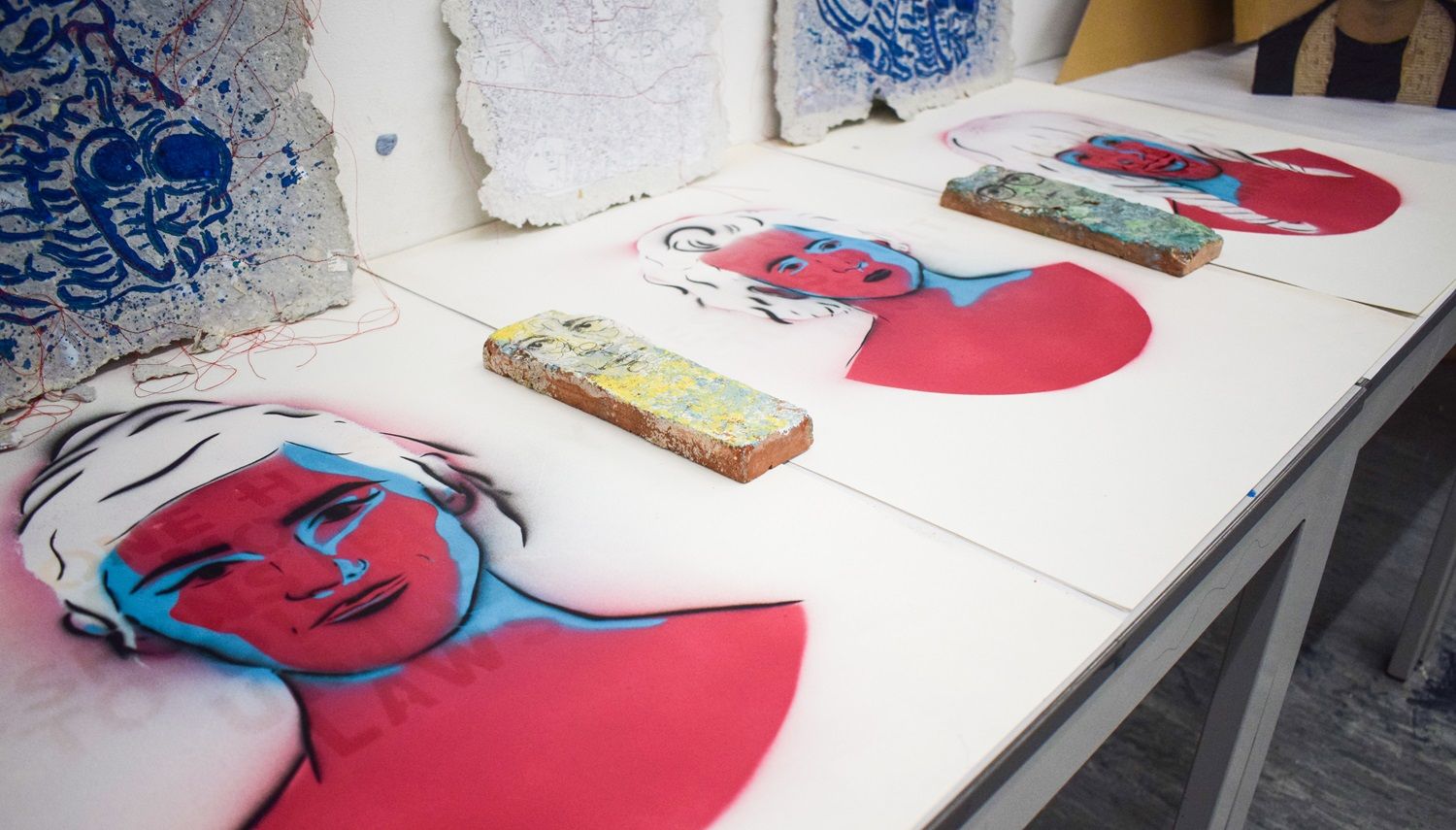The art world is always on the move, and 2025 looks like being no different.
In this blog we pick out five possible trends for next year…
1. AI-Driven Art
As technology continues to evolve, AI-driven art is gaining momentum and is predicted to become a major trend in 2025. Artists are increasingly using artificial intelligence to create unique, innovative pieces that challenge traditional notions of creativity.
This trend is fuelled by advancements in machine learning algorithms that enable computers to generate complex and aesthetically pleasing artworks.
AI-driven art is particularly popular as it merges technology and creativity, appealing to a tech-savvy generation and opening up new possibilities for artistic expression. The integration of AI in art provides artists with powerful tools to explore uncharted territories and push the boundaries of their creativity.
Additionally, the novelty and uniqueness of AI-generated pieces are attracting significant attention from art collectors and enthusiasts.
Notable Artists:
- Mario Klingemann: Known for his pioneering work in AI art, Klingemann uses neural networks to create intriguing, abstract pieces that question the role of the artist.
- Refik Anadol: Anadol’s immersive installations and data sculptures utilize AI to transform data into dynamic visual experiences.
- Sougwen Chung: Combining AI with traditional drawing, Chung explores the collaboration between human and machine in her captivating artworks.
2. Eco-Art and Sustainability
As global awareness of environmental issues grows, eco-art and sustainability are becoming increasingly prominent in the art world. Artists are incorporating sustainable materials, eco-friendly practices, and themes of nature and conservation into their work, aiming to inspire ecological responsibility.
It is a rising concern over climate change and environmental degradation that is driving this cultural shift towards sustainability. Eco-art resonates with the public’s growing environmental consciousness and desire for sustainable living.
Notable Artists:
- Agnes Denes: A pioneer of environmental art, Denes is known for large-scale ecological projects like “Wheatfield – A Confrontation.”
- Olafur Eliasson: Eliasson’s works often address climate change and the human impact on nature, using sustainable materials and renewable energy sources.
- John Sabraw: Sabraw creates vibrant paintings using pigments derived from toxic waste, transforming pollution into stunning artworks.
3. Immersive and Interactive Art

Immersive and interactive art experiences are set to captivate audiences in 2025. These artworks engage viewers in multi-sensory experiences, often incorporating virtual reality (VR), augmented reality (AR), and interactive installations that invite active participation.
In an age where digital experiences dominate, immersive art offers a unique and engaging way to experience art. By involving multiple senses and encouraging interaction, these artworks create memorable and impactful experiences.
As the technology behind VR and AR continues to advance, it makes this art format more accessible and appealing to artists and audiences alike.
Notable Artists:
- Marina Abramović: Known for her performance art, Abramović has ventured into VR, creating immersive experiences that explore human consciousness.
- teamLab: This interdisciplinary collective creates large-scale interactive installations that blend art, technology, and nature.
- Random International: Famous for their “Rain Room,” Random International creates interactive installations that merge art and technology.
4. Artivism and Social Justice
Artivism, the intersection of art and activism, is gaining traction as artists use their work to address social justice issues and inspire change. This trend reflects a growing desire to use art as a tool for raising awareness and fostering dialogue around critical societal issues.
As social and political movements gain momentum worldwide, artivism provides a powerful means of expression and protest. Art that addresses issues like racial inequality, gender rights, and climate justice resonates with audiences seeking to engage with these important topics. The visual impact of artivism can amplify messages and inspire action in ways that traditional activism might not.
Notable Artists:
- Banksy: The elusive street artist is renowned for his politically charged and thought-provoking works.
- Ai Weiwei: Weiwei’s art often tackles human rights issues, censorship, and the refugee crisis.
- The Guerrilla Girls: This anonymous collective of feminist artists uses art to challenge sexism and racism within the art world and beyond.
5. Biotech Art
Biotech art, which combines art with biological processes and living organisms, is an emerging field that explores the intersection of art, science, and technology. Artists are using biotechnology to create living sculptures, bio-hybrid installations, and artworks that evolve over time.
Biotech art pushes the boundaries of traditional art forms and invites viewers to reconsider their relationship with nature and technology. As advancements in biotechnology continue, artists have more tools and materials to experiment with, leading to innovative and provocative creations.
This trend appeals to a growing interest in the life sciences and the ethical questions surrounding genetic manipulation and synthetic biology.
Notable Artists:
- Eduardo Kac: Kac’s transgenic art, including the famous “GFP Bunny,” explores the implications of genetic engineering.
- Heather Dewey-Hagborg: Dewey-Hagborg’s work, such as “Stranger Visions,” uses DNA analysis to create portraits from genetic material.
- Oron Catts and Ionat Zurr: This duo, known for their Tissue Culture & Art Project, creates semi-living artworks using tissue engineering techniques.
If you are an art lover, why not consider taking the next steps on your creative journey at North Kent College? We offer a range of course aimed at supporting budding artists and their talents.
You will benefit from our top-class facilities including fully equipped workshops and studio spaces, a screen printing workshop and a ceramic kiln, and have the chance to exhibit your own work in a professional space.
All courses are taught by experienced and professional artists with a diverse skillset.
To find out more visit the Art course page of the North Kent College website.

